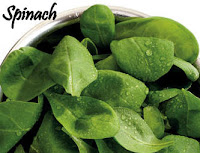The month of Poush in the Bengali calendar brings the gift of Peethes/Pithes. In early childhood, I had heard stories from Didima about the Brahmin man, who brought home rice, gur (jaggery), and coconut and asked his wife to cook Peethes for him, while he went to the pond to take a quick dip. Each time the Brahmani (the wife) dropped a Peethe in the hot oil, it made a sizzling sound and the Brahman tied a knot on a tree. This way he kept count of the Peethes made. When he came home to eat the Peethes, he found one missing. He demanded an explanation from the Brahmani and came to know that his wife had given one Peethe to his daughters – Umno and Jhumno to share between them. This infuriated the Brahman so much that he decided to banish his daughters in the forest the very next day.... how cruel!!
Another story which we wanted to hear again and again from Ma was about the lobster who took a promise from a Brahmani when she came to the pond to wash rice to prepare Peethes – that she will give one Peethe to him. The Brahmani cooked delicious Peethes but she forgot her promise. The lobster came in the night to steal the Peethes but had to pay the price with his life….. so inhuman!!
The above stories tell one thing – how coveted things Peethes are! There are umpteen variations, such as Dudh Pulee, Rosh Pulee, Rangaloo Pulee, Bhapa Peethes, Patisapta, Kheer pulee, Moogsamalee, etc.
One scene is etched in my memory – when on the day of Poush Sankranti, Thakuma put a large pan containing milk on the clay burner (unoon), stirring the milk constantly. Binadi sat against the grinding stone preparing rice powder and Ma sat on a peedi, shaping the Pulees with a filling that Thakuma dropped into the boiling milk in batches. I sat mesmerized watching the whole process, my hands itching to make Pulees. But I was not allowed to try my hand, as they were to be offered to Thakuma’s Gods and Goddesses, first. The children could not be trusted, as they might be tempted to pop in a piece of coconut or patalee gur (date jaggery) into their mouth, thus desecrating the offering.
Later in life, when carrying on the tradition in my own home, I had no difficulty making Dudh Pulee, with satisfactory results. Here is the method of preparation of this great sweet dish.
Ingredients for Dudh Pulee
Rice powder – 2 cups
Patalee gur (jaggery made from dates)
Coconut scrapings
Ghee – 1 tpsp
Maida – 1 tpsp
Milk - 1 liter
Tejpatta
Sugar
Method of Preparation for Dudh Pulee
1) First, you will need to prepare the Pulee filling. Stir coconut scrappings and patalee gur in low heat in a kadhai till both are well mixed. Keep aside a handful of coconut scrappings to be used later.
2) Next, take the rice powder and add maida and ghee to it. Knead with warm water into a smooth dough. Make sure the dough is not too tight.
3) Now, take a lump from the dough, make a ball about the size of a small lemon, fill the center with the filling, and give the ball the shape of a Pulee (flat and longish). Take care to secure the folds. Keep aside.
4) Put the milk to boil. Add tejpatta, little sugar, and the coconut scrapping into the milk.
 5) When the milk starts to boil, gently add the Pulees into the milk, stirring from time to time.
5) When the milk starts to boil, gently add the Pulees into the milk, stirring from time to time.
6) As the milk thickens and when the Pulees become soft, add a lump of patalee gur, sugar as per taste, and coconut scrappings. Cook till the patalee gur is dissolved. Your Dudh Pulee is ready. Hope you have fun making Dudh Pulee, all the best.

lllll
 Drain excess water from the pasta, pour cold water, drain again, and keep pasta aside.
Drain excess water from the pasta, pour cold water, drain again, and keep pasta aside.












 Let me now run you through the accompaniments that make the
Let me now run you through the accompaniments that make the 

